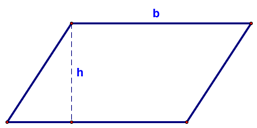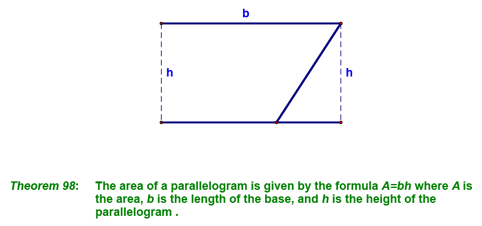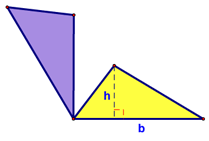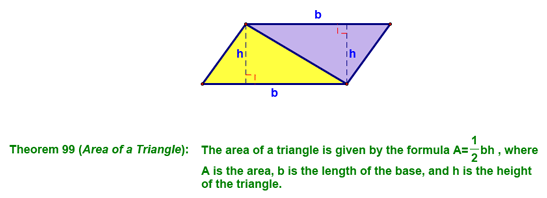 |
| you are here > Class Notes - Chapter 11 - Lesson 11-2 | |||||||||||||||||||||||||||||||||||
|
Area of Parallelograms and Triangles - Lesson 11-2 Today, we looked at how to find the area of a couple of different shapes. We started with a parallelogram:
We noted that if we cut out the triangle on the left, we could move it to the other side and form something (a rectangle) for which we already have an area formula:
We then looked at how to find the area of a triangle. We started with a triangle (the yellow one), made a copy of it (the purple one) and translated it (to the left):
Then rotated it clockwise:
Then translated it (up) again:
Until we had a shape for which we already had an area formula (a parallelogram):
|
|
||||||||||||||||||||||||||||||||||





